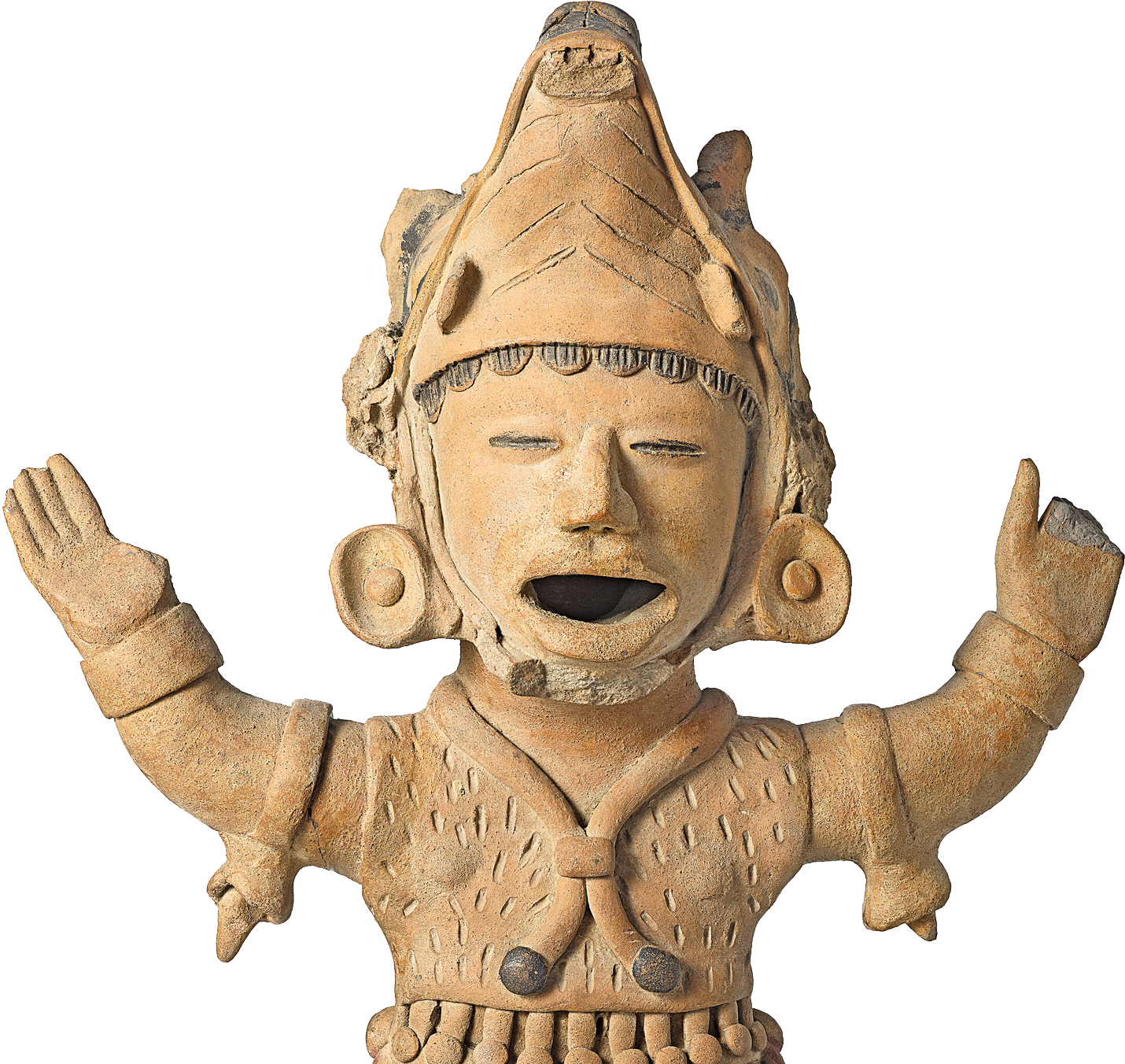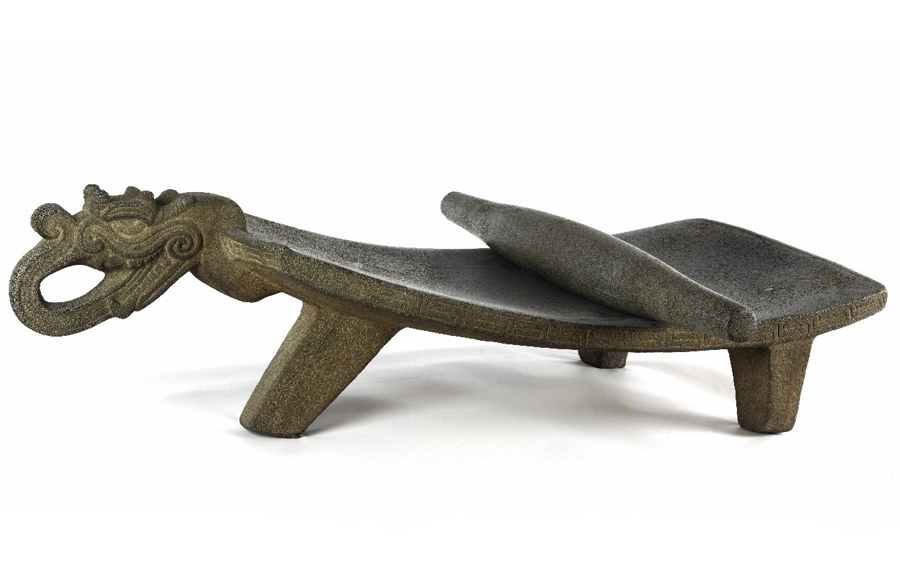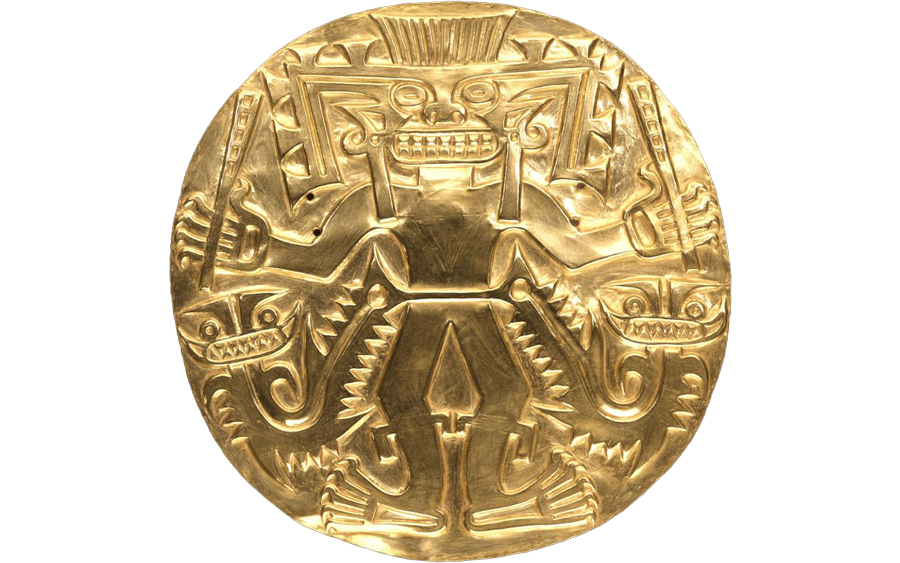Mexico & Central America
Experience the vibrant heritage and diverse cultures of the ancient Americas.
Main Level
Included with Museum Admission
Above: Figure of Dancing Man, Mexico, 300-800 CE, 61-1-2

Experience the vibrant heritage and diverse cultures of the ancient Americas.
Main Level
Included with Museum Admission
Above: Figure of Dancing Man, Mexico, 300-800 CE, 61-1-2

For thousands of years, a variety of distinctive yet interconnected cultures thrived in what is known today as Mexico and Central America. These cultures left behind a legacy of richly carved monuments and elaborate architecture.
Above: Figure of Dancing Man, Mexico, 300-800 CE, 61-1-2
Discover key intellectual developments in this region, including the origins of urbanism, political hierarchies, organized religions, and writing. Divided into seven regional and cultural sections, it stretches geographically from Mexico to the isthmus of Panama. With four towering Maya monuments—the most in any U.S. museum—come face to face with divine kings while learning about the representations of ballgame equipment from the Gulf Coast as the oldest sport in the world. See powerful Aztec sculptures as testaments to a once-great empire, while Olmec pieces made 2,000 years earlier reflect the beginning of a religious revolution that deified maize. Marvel at many ancient artifacts while exploring the traditions of Maya people living today.



This metate (grinding stone) from Honduras was carved from a single block of volcanic rock and decorated with the head of a serpent. NA11872
A masterful example of Maya painting on ceramics, this vase shows a warrior lord in black body paint accompanied by hieroglyphs giving his name. 38-14-1
This solid gold disk, embossed with the image of a fierce but enigmatic deity, was worn on the chest of a lord from ancient Panama. 40-13-3
Stela 14 was one of 40 limestone monuments that originally stood at the site of Piedras Negras, Guatemala. Senior Archivist Alex Pezzati shares more about the excavation and how this and other stelae from Piedras Negras played a key role in the decipherment of Maya history.

Oct. 15, 2024
Category: Research
Throughout the 20th century, American archaeologists announced a mesmerizing series of major discoveries in Central America. Looking back at the archives, a common theme appears: The archaeologists listened to local knowledge and relied on local labor.

In the first episode of VOICES American Historia: The Untold History of Latinos, actor John Leguizamo visits the Penn Museum to meet with Dr. Simon Martin, Curator of the Mexico and Central America Gallery, to discuss the innovations of the Aztec people.